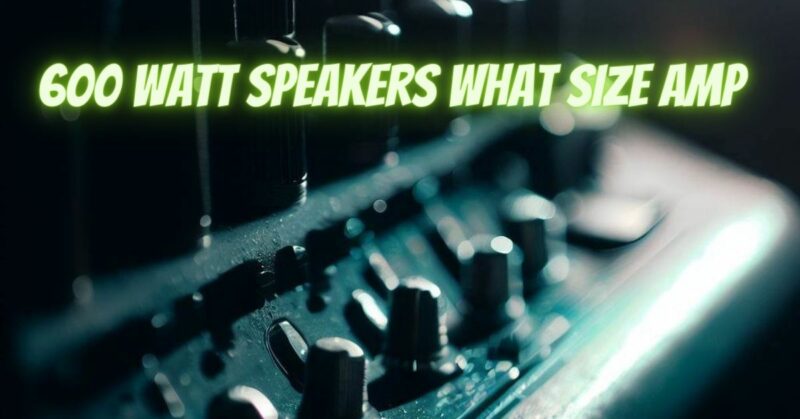When dealing with high-powered speakers like 600-watt speakers, choosing the appropriate amplifier is a critical step in achieving exceptional audio performance. Matching the right size amp to your speakers ensures they can handle the power effectively, delivering clear and powerful sound without risk of damage. In this article, we explore the factors to consider when selecting an amplifier for 600-watt speakers to optimize sound quality and create an immersive audio experience.
Understanding Speaker Wattage and Amplifier Power
The wattage rating of speakers indicates the maximum power they can handle without risk of damage. In the case of 600-watt speakers, they can withstand a maximum input power of 600 watts. However, it’s essential to understand that the speaker’s wattage rating doesn’t directly correlate to its volume capability; it merely represents the power-handling capacity.
On the other hand, the amplifier’s power rating indicates how much power it can deliver to the speakers. It is crucial to match the amplifier’s power output to the speaker’s power handling to ensure optimal performance and prevent any potential damage to the speakers.
Considerations When Choosing an Amplifier
- Match Impedance and Power: Check the impedance (measured in ohms) of the speakers and ensure that the amplifier’s output impedance is compatible. Most speakers have a nominal impedance of either 4 ohms or 8 ohms. Choose an amplifier that can handle the impedance of your 600-watt speakers for a stable and efficient audio connection. Additionally, ensure that the amplifier’s power output matches or slightly exceeds the speaker’s power handling capability for a balanced performance.
- RMS Power: Look at the RMS (Root Mean Square) power rating of both the speakers and the amplifier. RMS power indicates the continuous power handling capability and is a more reliable measure than peak power. Matching the RMS power of the amplifier to the RMS power of the speakers ensures a well-matched and reliable audio system.
- Consider Headroom: Providing some headroom in the amplifier’s power output is beneficial. Headroom allows the amplifier to operate with ease and reduces the risk of distortion when driving the speakers close to their maximum capacity. Choosing an amplifier with slightly more power than the speaker’s rating can help achieve a cleaner and more dynamic sound.
- Speaker Sensitivity: Consider the sensitivity rating of the speakers, which indicates how efficiently they convert power into sound. Speakers with higher sensitivity ratings require less power to produce the same volume level. Matching the amplifier to the speaker’s sensitivity optimizes the sound output and ensures efficient use of power.
- Application and Venue Size: Evaluate the intended use of the speakers and amplifier. For large venues or events, a more powerful amplifier may be necessary to deliver adequate sound coverage and volume. Consider the size of the space and the audio requirements to determine the appropriate amplifier size.
Selecting the right size amplifier for 600-watt speakers is crucial for achieving optimal sound quality and performance. Matching the impedance, RMS power, and sensitivity of the speakers and amplifier ensures a well-matched and efficient audio system. Providing headroom in the amplifier’s power output contributes to cleaner and distortion-free sound, allowing the speakers to perform to their full potential.
By considering these factors and choosing the appropriate amplifier, you can create a powerful and immersive audio experience with your 600-watt speakers. Whether for live performances, home entertainment, or professional audio setups, a well-matched amplifier will bring out the best in your speakers and deliver an unforgettable listening experience.


